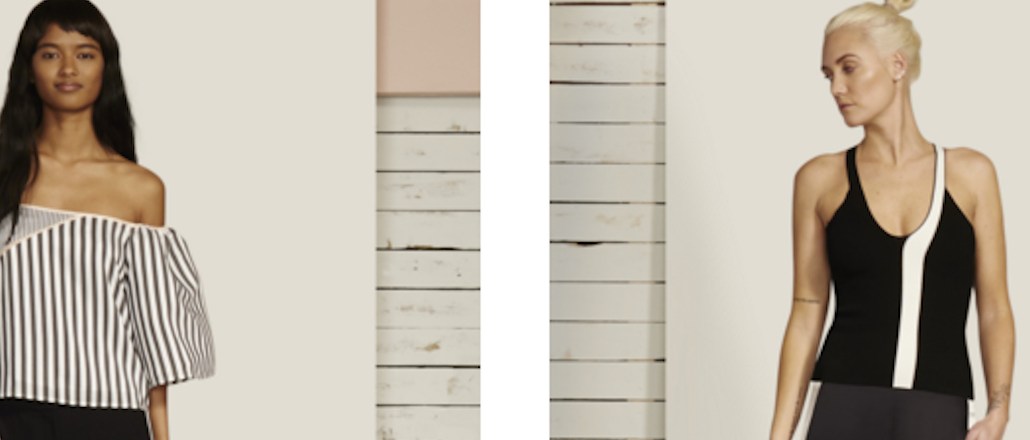
La Ligne is the latest apparel company to cut the middlemen out of luxury fashion.
Launched by Molly Howard, the former head of business development at Rag & Bone, and Valerie Boster and Meredith Melling, two former Vogue editors, the new direct-to-consumer fashion brand opened its e-commerce store this week. With backgrounds in traditional fashion retail and editorial, the three-person founding team decided to introduce a new brand for luxury basics online, using high quality materials without the high markups, akin to other companies like Everlane and Ayr.
Howard, who left her position at Rag & Bone in 2013, saw La Ligne as a way to start new in retail, without the baggage of a traditional company.
“I found that the basic, seasonless items were the big sellers for Rag & Bone, and something that people were drawn to: core, continuous items. That was the heart of the business,” said Howard. “As we discussed more about the line, we came to the conclusion that it’s how people are dressing now: Her closet is full, but she has six pieces she keeps going back to, and they should be well designed, quality fabrics.”

When deciding how to introduce this brand to market, Howard said that the team felt no need to traverse the traditional fashion route of selling wholesale through a department store. From front-row seats, Howard, along with Boster and Melling, saw that consumer demand and the existing dual-season fashion calendar were no longer syncing up.
“We don’t have to adhere to the traditional fashion calendar, people want to buy now what they see now and that was key for us: you can buy it today and wear it tomorrow,” said Howard, adding that the company is offering same-day, on-demand delivery for customers ordering in Manhattan for a $35 fee. Standard shipping is free.
La Ligne sells items through two collections: Edition, which contains trendier items like off-the-shoulder tops and fringe, and Essentials, which is basic tees, button-downs and pants. As the team creates new additions, Howard said it plans to communicate with its customers to make decisions on product and sizing.

“Most importantly, the reason we’re direct to consumer is that we will have access to what our customers want and need and like, and we’re able to design that collection for our customer,” said Howard.
“The primary benefit of online direct-to-consumer channels is the direct access they provide to customers,” said Matthew Egol, partner at PWC’s global strategy consulting team Strategy&. “These sites are learning labs for product knowledge, building brand and testing pricing and assortment.”
Beginning the week of April 11, La Ligne will also sell select items through Net-a-Porter, but Howard said that is the brand’s exclusive wholesale partner. The company also has plans to expand to menswear and to physical retail down the line.
“There are difficulties that come with being a traditional fashion brand,” said Howard. “But while I was at Rag & Bone, its physical retail stores was where the fashion was pushed. You’d see things in stores that you wouldn’t find elsewhere, and that was a big part of the business. I was drawn to that.”
More in Marketing

Ad Tech Briefing: Start-ups are now table stakes for the future of ad tech
Scaled ad tech companies need to maintain relationships with startups, when the sector is experiencing ongoing disruption due to AI.

Inside Kristi Argyilan’s RMN playbook: Lessons from the ‘godmother’ of retail media
Uber’s global head of advertising Kristi Argyilan says the future of retail media hinges on real-time relevance, brand differentiation, and breaking free from a one-size-fits-all playbook.

Digiday+ Research: More than half of marketers invest in TV and streaming, with an eye on impressions and branding
The majority of marketers are directing ad spend toward TV, with a focus on ads that drive impressions and branding.








